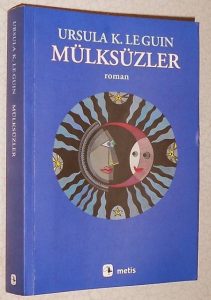
I have previously praised Jean Stafford and Doris Lessing as writers who made careers out of rejecting proper places and suitably feminine roles: recalcitrants. Jetlagged and homesick in a tiny, stuffy attic bedroom, I started reading A Wizard of Earthsea to my daughter once: “The island of Gont, a single mountain that lifts its peak a mile above the storm-racked Northeast Sea, is a land famous for wizards.” We were at home away. You believe in her novels as a world apart, yet also find yourself struggling to relate that world to your own life. These nine stones were the Tombs of Atuan.įull of meaning, and yet there was no saying what they meant that sums up just about everything you come across in a Le Guin story. It was smooth to the touch, but on the others, under the crust of lichen, vague carvings could be seen, or felt with the fingers-shapes, signs. They were crusted with gray and orange lichen as if splotched with paint, all but one, which was naked and black, with a dull gloss to it. One stood straight, the others leaned more or less, two had fallen. They stood there full of meaning, and yet there was no saying what they meant. Once the eye saw them it kept returning to them. Several black stones eighteen or twenty feet high stuck up like huge fingers out of the earth. To be a Le Guin reader is to become accustomed to thinking on your feet, and to noticing that what you think has no guaranteed permanence: I’m not talking so much about the vividness of a well-rendered video game as a curiously open-ended quality that makes you feel that her world is both very far away and right here in your own bedroom. Perhaps what most sets Le Guin apart from her peers is the vivacity of her worlds, the way she makes readers accept a world simultaneously distinct from and entirely a part of life as it’s ordinarily lived. Her Earthsea has less in common with Narnia, Hogwarts, and Percy Jackson’s Camp Half-Blood than it does with medieval romances and Icelandic sagas, where dragons and death keep company with fishing yarns, goat-herding woes, and village quarrels.


Le Guin’s peculiar gift, though, is to make the ordinary feel as important as the epic: mundane questions about who’s cutting firewood or doing the dishes share space with rune books and miscast spells.

Like other protean, inventive writers who move between speculative and realist fiction (Margaret Atwood, Doris Lessing, David Mitchell, Kazuo Ishiguro), Le Guin drops her reader into an uncanny double of our own world, a dream where somebody changed the names and shapes of everything and forgot to let you in on the secret. If you think you have Le Guin pegged because you know young adult fantasy, think again.


 0 kommentar(er)
0 kommentar(er)
